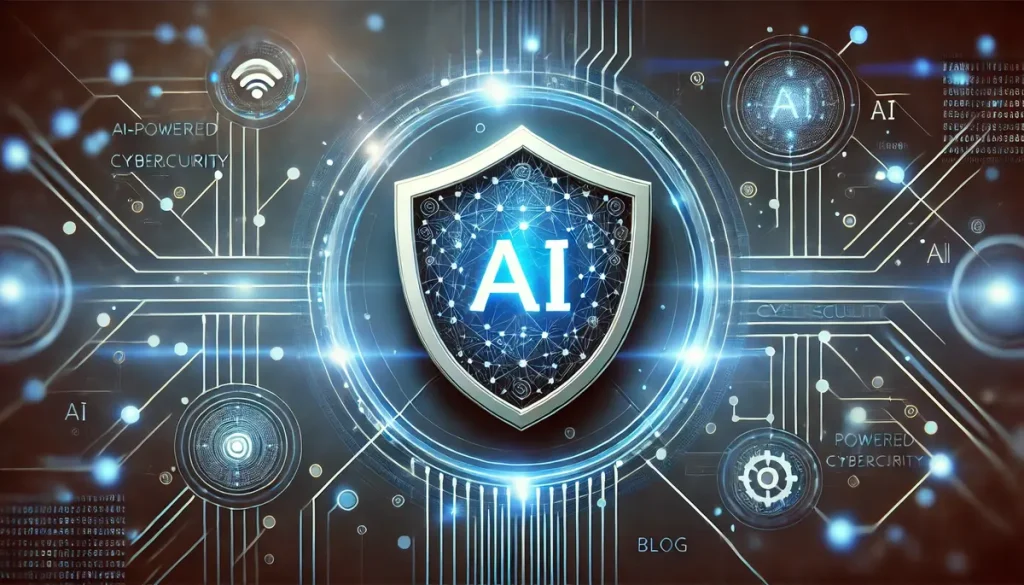Are your digital assets truly safe from the ever-evolving cyber threats in today’s digital landscape? With cyberattacks increasing in sophistication, traditional security approaches often fall short. Studies show that global cybercrime costs could reach $10.5 trillion annually by 2025, underscoring the need for a proactive defense strategy. Here, AI-Powered Cybersecurity steps in as a critical shield, using advanced technology to identify, prevent, and respond to threats faster and with greater accuracy than manual methods alone. This blog explores five robust AI-powered solutions that can significantly improve your digital security, covering essential features and benefits to help you make informed choices in safeguarding your assets.
Read More: AI Stocks to Watch for in 2024: Investing in the Future of Technology
Understanding the Need for AI-Powered Cybersecurity
The Growing Threat Landscape
The digital world is expanding, and so are the threats. From data breaches to ransomware attacks, the sheer volume and complexity of cyber threats continue to grow. As businesses rely more on digital platforms, the risk to their digital assets increases proportionally. Unfortunately, traditional cybersecurity methods may not adapt quickly enough to protect against these constantly evolving dangers.
The Role of AI in Cyber Defense
AI-powered cybersecurity enhances the ability to detect, prevent, and respond to attacks in real time. Unlike conventional approaches, AI processes vast amounts of data instantly, identifying patterns and anomalies that indicate potential threats. This adaptability makes AI-powered solutions invaluable in protecting against sophisticated attacks, where quick detection can mean the difference between security and a costly breach.
Benefits of AI-Powered Cybersecurity Solutions
AI-powered cybersecurity offers several critical benefits:
- Real-time threat detection: Identifying threats as they emerge.
- Improved response times: Swift action that reduces potential damage.
- Continuous learning: AI systems improve over time, adapting to new risks.
Through these features, AI-powered solutions enable businesses to maintain strong defenses, keeping digital assets safe and secure.
Key Features to Look for in AI-Powered Cybersecurity Solutions
- Automated Threat Detection and Analysis: Automation is a game-changer in cybersecurity, allowing systems to identify threats instantly without human intervention. With AI, automated threat detection assesses enormous data sets, pinpointing suspicious activity. This feature is crucial as it reduces the time taken to respond to threats, minimizing potential damage.
- Predictive Capabilities: Predictive analytics uses AI to foresee potential threats before they happen. By analyzing data patterns, AI anticipates risk factors, enabling businesses to prepare. Predictive capabilities allow cybersecurity systems to act proactively, stopping threats in their tracks.
- Adaptive Learning: AI-powered cybersecurity solutions evolve over time, improving their detection abilities. Through machine learning, these systems recognize and adapt to new threats as they arise. This continuous improvement offers a robust layer of protection, making AI-based systems resilient to changing cyber risks.
- User Behavior Analytics: User Behavior Analytics (UBA) helps detect unusual behavior, often signaling potential threats. AI assesses normal user patterns and flags any anomalies. With UBA, organizations gain a deeper understanding of user actions, which enhances internal security by identifying potential insider threats.
- Data Encryption and Security Protocols: Effective data protection goes beyond detection; it includes safeguarding data at rest and in transit. AI enhances encryption techniques and security protocols, ensuring data remains secure. This feature helps prevent unauthorized access, protecting sensitive information.
How to Choose the Right AI-Powered Cybersecurity Solution for Your Needs
Assessing Your Business’s Unique Risks
Before implementing an AI-powered cybersecurity solution, it is vital to assess your organization’s specific risks. Identify which assets need protection and consider any unique challenges your industry may face. This analysis helps prioritize the most relevant features in a security solution.
Evaluating Key Features Based on Your Needs
Different AI-powered solutions offer varying capabilities. If protecting endpoint devices is essential, an EDR solution may be your best option. For a broader security overview, SIEM might be a better fit. Consider each feature’s importance to ensure the solution meets your requirements.
Compatibility with Existing Systems
Seamless integration with existing systems is essential. AI-powered solutions should complement your current cybersecurity infrastructure, not complicate it. Ensure compatibility with your network architecture and software to maximize the effectiveness of the new solution.
Budget Considerations and ROI
Budget plays a critical role in choosing a cybersecurity solution. While AI-powered solutions may require initial investment, the potential savings from avoiding cyber incidents make them valuable. Assess the return on investment (ROI) by considering how much the solution could save your business over time.
The Future of AI-Powered Cybersecurity
Emerging AI Trends in Cybersecurity
AI-powered cybersecurity continues to evolve, with new trends shaping its future. For instance, deep learning is making AI even more adept at recognizing complex patterns. Zero-trust architecture is also gaining momentum, providing comprehensive security by verifying every access attempt.
The Impact of AI on Cybersecurity Jobs
Although AI automates many security processes, it enhances rather than replaces cybersecurity professionals’ roles. AI empowers teams to focus on strategic tasks, as routine monitoring and detection become automated. This collaboration between AI and human expertise results in a more robust security approach.
Why Continuous Adaptation is Key
Cyber threats evolve, and so must cybersecurity solutions. Continuous adaptation to new threats is vital for businesses to stay protected. By adopting AI-powered solutions, organizations ensure they remain equipped to tackle emerging risks, maintaining a proactive approach to cybersecurity.
Conclusion
With the increasing complexity of cyber threats, AI-powered cybersecurity is no longer a luxury—it’s a necessity. By integrating AI-driven solutions such as intrusion detection systems, endpoint detection, and behavior analytics, businesses can significantly bolster their digital defenses. As cyber threats continue to evolve, these AI-powered solutions provide proactive and adaptive protection, ensuring your digital assets remain secure. Is your organization prepared to face today’s cybersecurity challenges with the power of AI?

